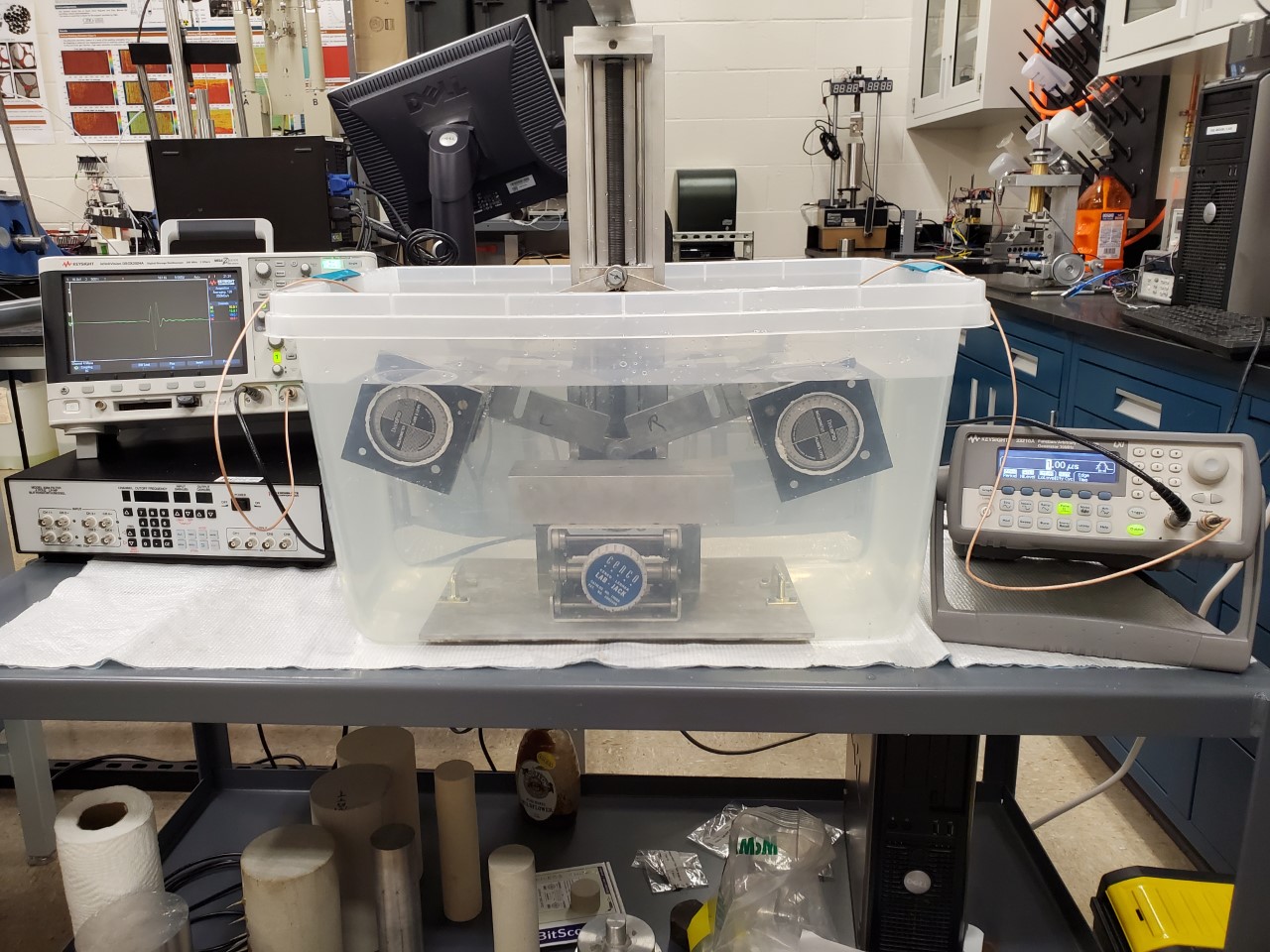High-resolution, full-core acoustic analysis without direct sample contact
Problem statement
Acoustic testing with ultrasonic transducers is a simple and non-destructive means of analyzing rock samples for hydrocarbon exploration. Such analysis can provide information on the rock type, density, shape and grain size, porosity, anisotropy, pore liquid, confining pressure, temperature, and rock mass properties.
Typically ultrasonic transducers are mounted to the ends of sample to measure the through transmission P or S-wave acoustic velocities, used to calculate elastic properties. Often, core plugs are removed from a larger core sample for detailed analysis. However, it is sometimes difficult to relate this localized sampling of an already biased core sample to the wireline or LWD acoustic logs, especially when the sample is highly heterogeneous and anisotropic.
Additionally, in cases where core samples need to be environmentally isolated to preserve in-situ structure, traditional methods have to rely on difficult to achieve sample transducer contact through a core liner.
There exists a need for a high resolution, full-core acoustic velocity analysis technology that does not require direct contact with the sample.
Technology description
Researchers at The University of Texas at Austin have developed a method for analysis of the entire core by using a rotatable transducer array that can accurately acquire both P and S wave velocities simultaneously. This method makes use of a novel transducer coupling system and does not require the extraction of small core plugs from the full-core. In this manner, a log of laboratory P and S wave velocities are generated and directly compared with the logging data.
Further, the technology can generate a range of measurements at each core depth and better characterizes the local variability. The high resolution of this laboratory system can reveal characteristics that may be too small for conventional acoustic logs to identify. The technology enables rapid, full-core, non-destructive analysis, and is compatible with cores that may be confined within a core liner or more complex pressure-coring system.
Stage of development and results
Multiple laboratory prototypes like the one shown below were designed around the method. The prototypes employ the selective rotation of ultrasonic transducers (TD) immersed in a liquid adjacent to the sample. Experiments were performed on Aluminum 2024, Berea sandstone, and Texas Cream Limestone. The samples were tested dry and fully water saturated.
Results from refracted wave tests using the prototype shown was ideal for all samples tested, with an error in arrival time estimation consistently under 4%, and the error in velocity estimation under 6%.
IP position: Published PCT application WO2019036351A1

Benefits
- Whole core can be analyzed without the need for sample plugs
- Fast and high resolution
- Does not require rigid connection with the transducer
- Enables testing through core-liners and in pressure vessel

